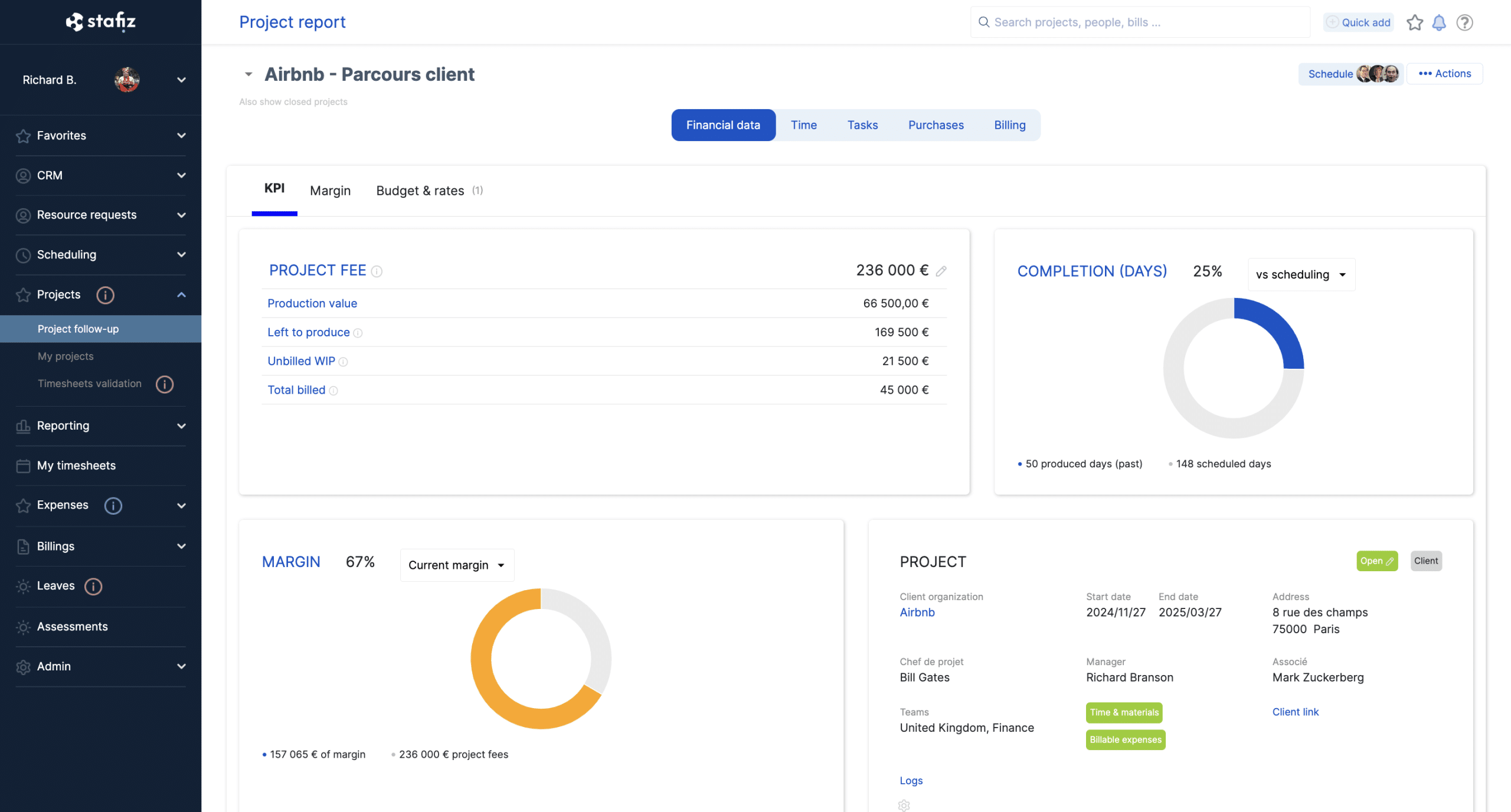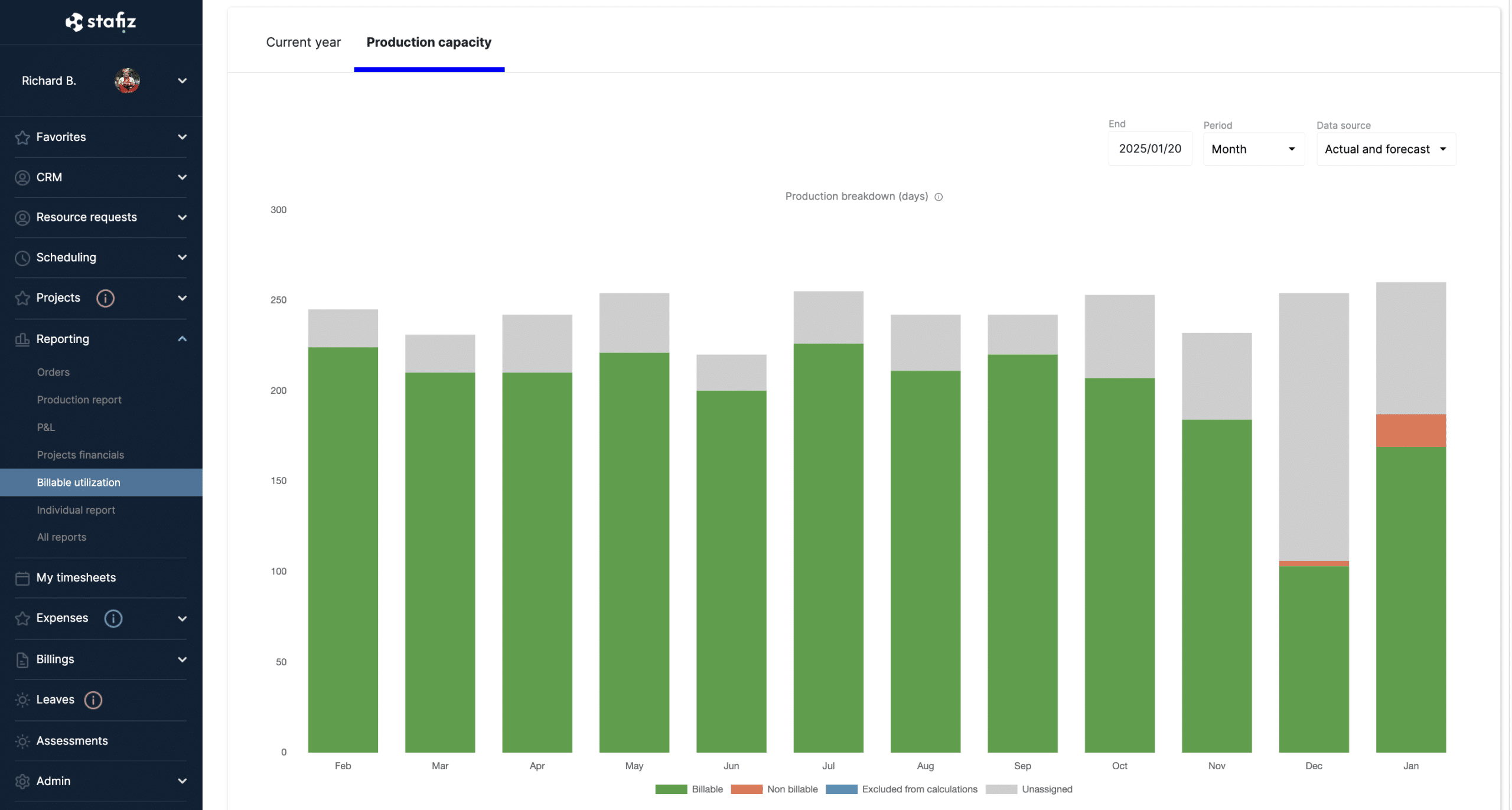How to make a project progress report for optimal follow-up?

The success of a project is conditioned by meticulous and regular project monitoring.
The aim is not only to measure and analyse the various indicators throughout the project, but also to communicate them effectively to the team.
Indeed, it helps to develop their involvement, their confidence and therefore their productivity.
The progress report more commonly known as a progress report, is used to inform teams about the project status.
It is therefore an essential document for project monitoring. Because of this, you need to build it strategically as it serves as a reference throughout the project.
In this article, we offer methods and tips for producing and sharing effective progress reports.
What is a project progress report?
Project progress report: definition
The project progress report is an informative document shared with the team working on the project.
Sent out on a regular basis, it is used to summarize the status of the project, communicate next steps, and highlight risks.
The project progress report is not only intended for the operational team but for all those who are directly or indirectly concerned by the project. Thus, it must remain concise and structured for quick consideration.
How to calculate the rate of progress of a project?
Although it's complex to establish a precise rate of project progress, certain data can provide an overview. In particular, visibility of the distribution of resource planning in relation to the initial schedule helps you to get an idea of the state of progress.
The Stafiz project management software features a time tracker that allows you to make real-time calculation to give you a clearer idea of the rate of progress.
Advancement is calculated on the number of days (or hours) already completed, in relation to the total number of days or hours of the assignment. When a mission is at 100%, it is normally over.

The progress rate is visible in the mission monitoring dashboard in Stafiz
To calculate the rate of progress of a project, there are 2 methods.
- Compared to the Realized (or resource planning): The total number of days is calculated as the sum of the days completed and the resource planning. It is therefore normally the most up-to-date view of progress.
- Relative to the production plan: The number of days is the number of days in the production plan. Thus, if you have a rate of 110%, it means that you have already worked 10% more days than the production plan, and that you must therefore put an end to it quickly
Why is project status important?
To inform the teams
The main objective of the progress report is to inform the teams so that each employee is fully aware of what has been achieved and what remains to be done.
In many cases, it is generated using project management software which centralizes all project-related information.
This ensures a uniform level of information for the entire team.
To monitor the progress of the project
Project monitoring is essential to ensure the success of a project. So, the state of progress is part of this approach by requiring us to take a step back, and this on a regular basis.
Indeed, it allows you to monitor the progress of the project, to see progress or to highlight potential risks.
To be proactive in the event of deviations
One of the main components of risk management is the analysis of actual versus forecast. This enables us to identify potential threats.
By mentioning them in the progress report, the teams are then aware and alert to the reality of the project.
Project managers, alerted and supported by their teams, can then make informed decisions to mitigate threats.
To facilitate asynchronous work
Finally, consolidated status tracking helps limit meetings.
Indeed, employees have the necessary information asynchronously. As a result, the impact of simple information meetings is limited and only those with high added value are maintained.
For teams working remotely, the progress report helps maintain and strengthen the link because it ensures regular communication.
In addition, it allows a written record of the information shared.
How to write an effective project progress report?
Setting a standard for teams
Clarify the objectives of the progress report
To be effective, a progress report must be predictable. Thus, it is important to remember from the beginning what it is for and why it is important.
To realize its value, your teams need to be clear about the goals of the progress report.
This informs about the progress of the project, draws attention to the points of attention and provides an update on the progress of the project in relation to the established schedule.
Thus, the progress report is concise and consistent from one report to the next.
Involve teams
To help you create effective progress reports build the template with your teams.
Don't hesitate to involve them, to make sure that the format or the information contained is relevant.
After all, this progress report is for them and they will be the ones who will consult it throughout the project.
Define a template
To save time, we encourage you to define a template structure at the beginning of the project. This will allow you to produce your reports quickly and maintain consistency, thus enhancing impact.
In addition, if the structure of the projects allows it, you can reuse your template from one project to another. Your teams, already familiar with your way of communicating, will gain in productivity.
The first step to standardizing your templates could be to define a naming nomenclature, indicating the name and date of the project. Moreover, it will make it easier to navigate through the history.
Structure the document
The progress report must be structured. However, there's no precise model, depending on your needs or the type of project.
In all cases, the key is to maintain consistency from one report to the next and to group the information in a logical way in order to make it easier to read.
Don't forget to include a summary and appendices to allow collaborators to delve deeper into certain topics if they need to without weighing down the document
Giving context
One of the essential components of the progress report is to recall the context.
- Why is the project taking place?
- What is its scope?
- What is the objective to be achieved?
This contextualization can also make it possible to recall the roles and responsibilities expected by each of the project members.
Summarize the key points
The key points of the project should be summarized in a few sentences.
Bullet points are still an effective way of structure information and avoid lengthy sentences.
Indeed, the progress report includes the most salient and relevant facts for the team.
Instead, it quickly indicates whether the project is on track, its risks, and the next steps.
Donate additional resources
The progress report can include all the resources needed to dig deeper into the topic. Any element that allows us to go further is welcome.
However, it should remain in the form of links to leave everyone free to access or not a higher level of information, without overloading the document.
Adding resources directly to the progress report can be important as it avoids back-and-forth emails.
Debrief on the schedule
The progress report should address the planning aspect. Thus, he highlights the progress of the project compared to the schedule initially established.
In addition, the status of progress makes it possible to clearly list:
- the remaining steps;
- next steps;
- the sticking points;
- potential risks.
Discuss potential risks
Risks are a strategic part of the progress report.
Anything that threatens the success of the project should be mentioned: budget overruns, delays, etc.
Here, it's about finding a happy medium between being transparent without being too alarming.
How do you present the project progress?
Define key progress indicators
Identifying indicators
The success of a project is measured using success criteria determined KPIs, or performance indicators.
In a progress report, indicators are also used to measure the progress of the project, such as:
- the completion rate;
- occupancy rate;
- the Rate of resource planning ;
- The Time Performance Index.
These must be determined in advance during the preparation phase, and may vary from project to project.
Identify milestones
In order to provide clear visibility into the status of the project, the progress report should highlight milestones that everyone can understand.
At the crossroads between tasks and milestones, milestones represent key points in the project.
For example, the sending specifications to the customer can be considered a milestone.
As such, the progress report should clearly indicate the milestones that have been achieved to help the team clearly visualize what has been achieved.
Choose a visual format
The importance of the choice of format
While the format may seem trivial, in reality its impact on the assimilation of information is substantial.
Indeed, a report produced in a format adapted to its audience will allow information to be conveyed in an effective way.
There is no need to reinvent the wheel: sometimes a simple, structured and visual email containing all the necessary information will suffice.

Production capacity is visible in Stafiz's utilization rate reporting dashboard.
Different formats depending on the information to be communicated
Progress reports can take many forms.
While the most common are written reports, there are also more visual presentations such as dashboards.
These are valuable in project management because they provide a quick visual overview of important information.
Choosing the right formats
Be careful about the visualizations you use. Just because an element is visual does not necessarily help with understanding.
This will limit the use of visualizations such as Gantt charts in progress reports. While effective for project planning, they can be complex to read, do, or maintain.
For example, mindmaps or coloured dots representing the project's meteo may be more representative.
5 Best Practices for Creating Clear and Effective Progress Reports
Choose a sharing frequency that works for your project
Depending on the type of project
A progress report is intrusive. As a result, its frequency should be limited to the strict minimum in order to maintain its impact.
The frequency of mailings will therefore depend on the scope of the project.
If it is a project that takes several months or even years, a progress report every 15 days seems sufficient.
There is no such thing as a good frequency: it must above all be consistent with your project and its chronology.
Communicate regularly and continuously
Whatever the frequency chosen, the main thing is regularity. The progress report must be predictable.
To help you keep up the pace, you can set automatic reminders.
Highlighting successes
Informing rather than alerting
To produce effective reports, you must sincerely consider the progress report as a source of information, not as a warning.
This document is not intended to point out what's going wrong, but simply to keep your team informed of the project progress.
Highlighting successes
Thus, we encourage you to value successes.
Hence the importance of clearly displaying what has already been achieved and to be optimistic about the future.
Be transparent and realistic
However, the progress report must be realistic and offer maximum transparency as possible.
The more information teams have, the more likely they are to be involved in the success of the project.
Tailor the presentation to the audience
Define the list of recipients in advance
Another tip for producing effective progress reports is to make sure your document is delivered to the right people.
Make a list of participants as soon as the project is prepared to make sure you don't forget anyone.
All project participants should be included, both from an operational and managerial point of view.
Tailoring communication to participants
In addition, the tone, format or volume of information should be adapted to your audience.
Thus, communication will have to be adapted: you will not address the operational team in the same way as the project sponsors.
That's why it's so important to clearly define the objectives of your progress report, and to whom it should be addressed, right from the preparation phase.
Keep it concise
As seen above, the progress report is a recurring document, and potentially intrusive for its recipients.
As a result, it must be quick to read and therefore concise.
In addition, the progress report must be able to be made quickly. Hence the importance of using a project management tool to facilitate its creation.
Use a project management tool
Single source of reference
One of the advantages ofusing a project management tool is that all information is centralized in one place.
This makes it easier to collect and transmit. The tool then becomes a single source of reference.
To find out how to perform a reliable and comprehensive risk analysis, follow our guide!
💡 To find out how to choose the right ERP for your service company, follow our guide!
Access to history
What's more, using a project management tool gives you access to the entire project history.
Progress reports for the entire project are then easily accessible, allowing for accurate project tracking.
Automate information collection and processing
Gathering information can be a complex and time-consuming exercise.
By using a project management tool, you avoid having to manually gather information from multiple sources.
The more automation and synchronization between your various tools, the more efficient you become.
Facilitate collaboration
Finally, the use of a tool also makes it easier to share information within the team.
Some tools also include adding comments task tracking or document management, helping to streamline communication.
Project progress report: example structure
To help you build your progress reports, we offer you a structure.
-
- Title : Progress report - Project name - Period
- Project weather : An icon or a phrase is enough
- Summary
- Project background and objectives :Brief overview
- Milestones achieved
- Problems encountered, solutions provided and risks
- Action plan : Remaining milestones and next steps
- Conclusion : Recommendations and encouragement
- Links and sources to go further
The progress report is a strategic document for your team and can be instrumental in the success of the project.
An ill-informed team can develop mistrust, a lack of coordination and involvement, putting the project in danger.
To be effective and relevant, your progress reports must be concise, structured, and adapted to your audience.
In addition, proposing a project summary at the end could also prove beneficial. This would provide an overview of what has happened, and a reference point for future projects.
Questions:
-
- To effectively monitor the progress of a project:
1. Define goals and deliverables: Clarify the expected results.
2. Plan tasks: Use a tool like a Gantt chart or Kanban board.
3. Measure progress: Track KPIs like percentage of completion, schedule variances, or stay on budget.
4. Communicate regularly: Share reports and hold meetings to check in.
5. Anticipate risks: Identify potential problems and implement solutions.
Rigorous monitoring keeps the project aligned with its objectives while minimizing deviations.
A project progress report typically includes:
– Executive Summary: Overview of progress and key points.
– Progress made: List of tasks completed, milestones achieved, and deliverables delivered.
– Problems encountered: Description of obstacles and corrective actions.
– Current status: Overall percentage progress, analysis of schedule or budget variances.
– Next steps: Action plan, timelines, and upcoming responsibilities.
This document aims to inform stakeholders about the status of the project in a clear and concise manner.



